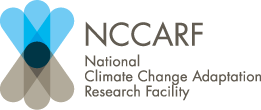You are here
After the storm: what east coast lows mean for council operations
The recent storms on the east coast have highlighted how vulnerable some communities are to storm surge and sea-level rise. The dramatic images of houses and a swimming pool falling into the sea has certainly raised the public profile of the need for coastal adaptation.
The Insurance Council of Australia was very quick to reach out to the media and point out that householders may be in trouble when it comes time to make a claim. They were clear that such coastal damage was unlikely to be covered by existing insurance policies. The Financial Rights Legal Centre went into specific detail about the colour of the water that caused the damage – that is, if it was clear then it would not be covered due to it being damage caused by the action of the sea. Despite this, the insurer Youi chose to waive the exclusion of damage caused by the sea and pay for damages to two of the properties. The Australian newspaper reported in July that two other insurers had also agreed to pay out residents. This article also stated that the council had reached agreement on the payment for a sea wall. Such a wall had been planned many years earlier but was blocked by local protesters. Surfrider Foundation Australia, who organised this original protest, continues to push for the protection of beaches through sand nourishment, and to protest against seawalls at Collaroy.
David Rissik, the Deputy Director of NCCARF, has acknowledged that communities forget about past flooding events and tend to keep building in flood prone areas. He says that as long as governing authorities allow rebuilding, people will flock back.
What advice do you provide to your communities about flooding and insurance?
What do you tell them about flood risk?




